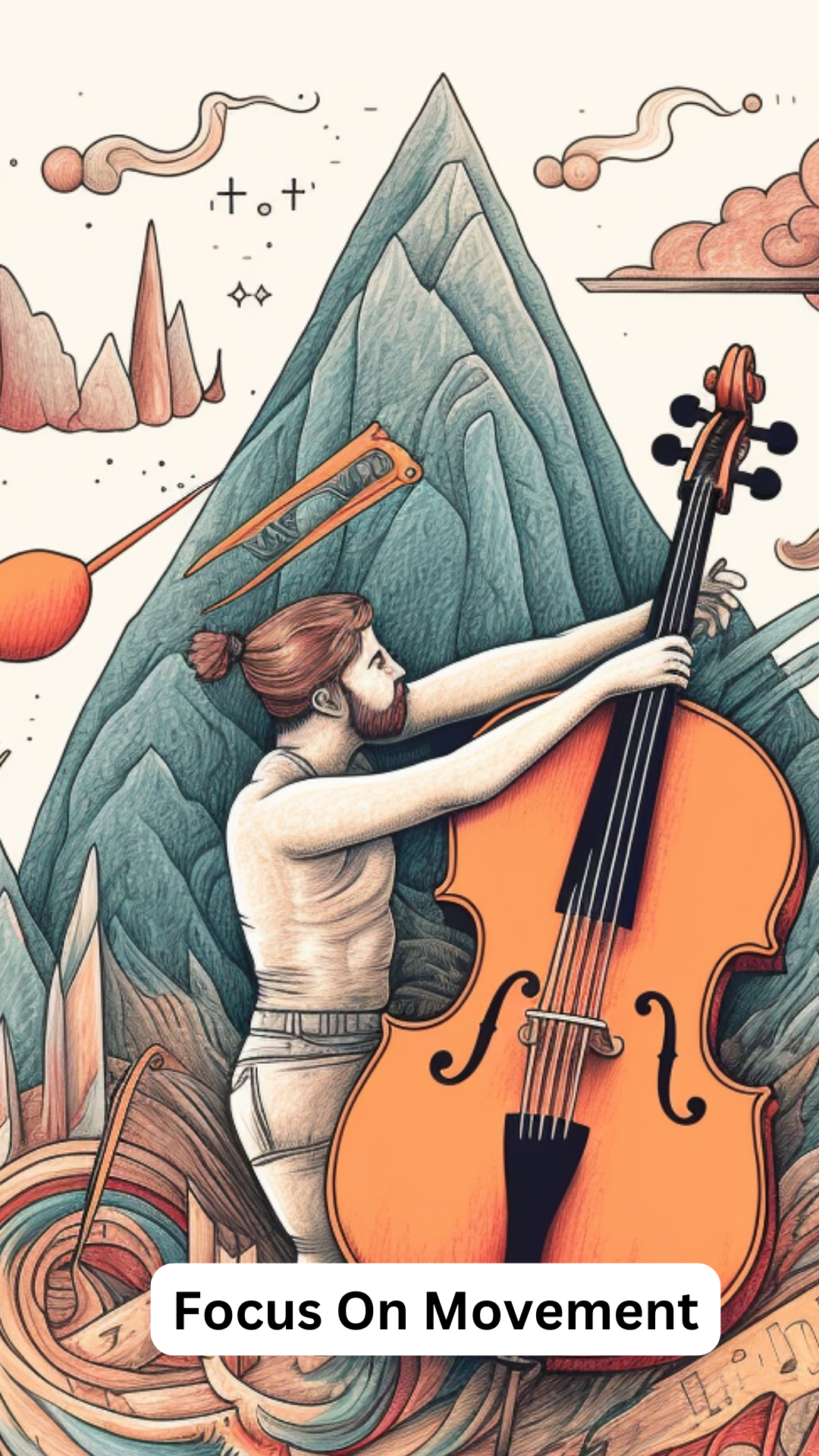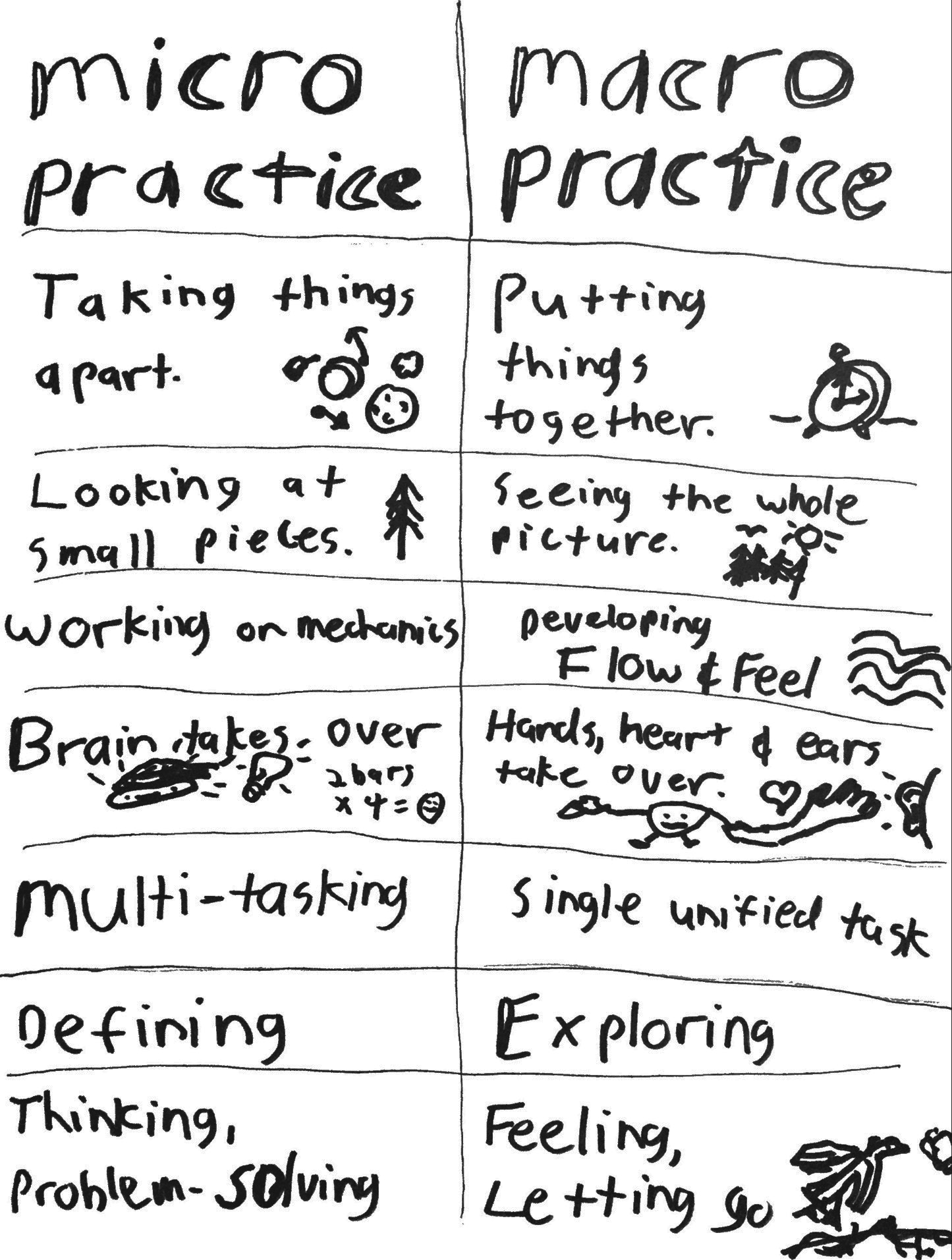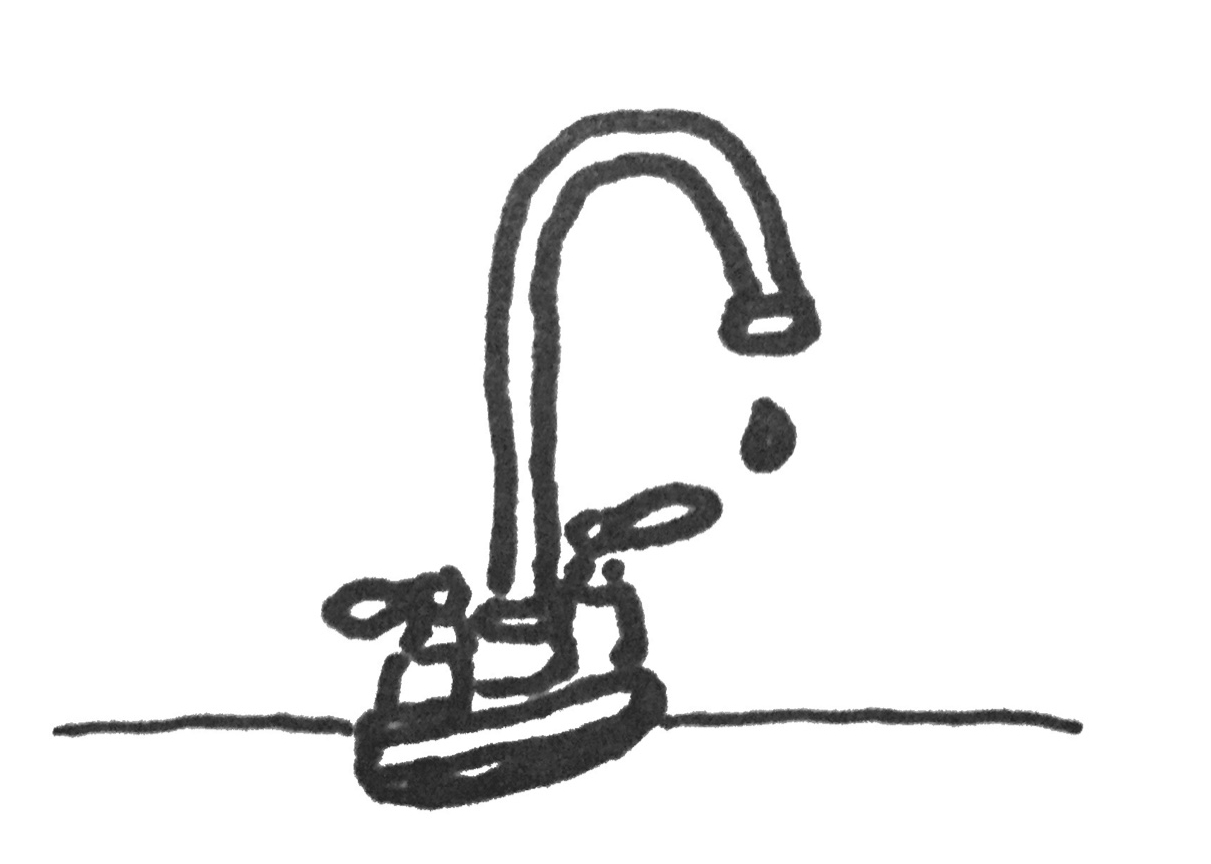
Overview
By putting movement at the forefront of your practice, you’ll unlock new levels of understanding, and your music will truly come to life.
The essential idea is that when first learning a piece or skill, you’re not yet making music. You’re practicing and refining different motions. Become deeply aware of these motions by fiddling with micro-motions, and you’ll find a sense of physical pleasure in your practice.
Why Movement Matters 🔑
While style and expression are undoubtedly crucial in music, movement is the foundation upon which they are built. It’s the very essence of what makes your fiddle sing. By prioritizing movement, you pave the way for style and expression to flourish naturally. If you never get the motions right, it will be almost impossible for the music to sound good.
Action steps
- Slowly play the hardest part of that hardest part of a tune
- Practice the motions without even making sound
- Breathe and relax the muscles until it starts to feel physically enjoyable
- Once you get the motions, turn your attention to the sound
- Repeat for other sections of the tune
Fiddling With Micro-motions 🔬
I’ve talked a lot about Micro-practice in my course and writing. This is my term for breaking a large, complex piece of music down into small manageable pieces. That way you successfully improve each little piece. These small wins give you confidence and motivate you to continue.
But in addition to breaking down the music, you can break down the movements. Playing even 3-4 notes of piece requires a complex sequence of smaller motions. Start to see if you can break down a macro-motion into a series of micro-motions. Independently practice each little micro-motion.
In the same way that we put together small learning chunks of music once they’re mastered, you can re-build sequences of motions as your hands learn the micro-motions.

Build Muscle Memory 💪
Developing ideal movements requires practice, repetition, and patience. Muscle memory comes with repetition, so it’s essential to be mindful of the movements you’re reinforcing. Remember, if you repeat a mistaken motion, you’re essentially practicing that mistake.
Make Repetition Fun and Engaging 🎉
Repetition is vital to mastering movement, but how can you keep it fun and engaging? The secret is focusing on the movement itself, rather than the music. This approach makes repetition more interesting, as you start to investigate and explore the intricacies of each motion.
The goal is to get to a point in which you enjoy the movement. In which there is a sense of pleasure in making the correct movements. If you can get into this mindset, then you’ll discover that the feeling of boredom goes away when you do repetitive practice.
Give Your Hands Time ⏳
As you delve into the world of movement, remember to give your hands the time they need to figure out the current challenge. Your brain learns things more quickly and then gets bored. It wants to move on to the next shiny new object.
But the hands learn slowly. They need lots of slow repetition to fully internalize something. Have you ever noticed that there is a kind of nervous tension when you play something too fast? It’s almost like you make your hands anxious.
In his book, The Creative Act, Rick Rubin says “Patience is not arguing with reality.” Instead of forcing your hands to do something they can’t do yet, meet them where they are. Work on fine-grained motions that you can actually improved.

Practice without making a sound 🧘♀️
Once you’ve broken a macro-motion down into component micro-motions, practice those little movements with even making sound. Do this until the body relaxes. Allow for a feeling of joy in doing the correct motion in a relaxed way.
After you practice without sound, do the same motion while actually playing the little piece. Continue to alternate between practicing with and without sound. This is a musical conversation.
Become a Movement Mechanic 🔧
When practicing like this, think of yourself as a mechanic. In order to understand the problem you might need to take apart the engine. Examine each piece, maybe clean them up. Then put them together again.
Embrace this analytical mindset, knowing that it’s just one of many lenses you can use as a musician.
Let’s Practice 🎻
What is a particular skill or motion that you know you struggle with? Take note of this and then next time you practice, explore ways that you can break the skill into a series of small micro-motions. Practice the macro and micro motions for at least one week. Observe how your hands feel at the beginning and then the end of the week.
Final Thoughts 🚶🏻♀️
By putting movement at the heart of your fiddle practice, you set yourself up for success. Embrace the process, become a movement mechanic, and unlock new levels of mastery. Remember, patience and repetition are key, so grab your fiddle and let’s get moving! 🎻💃
Two ways I can help you level up your fiddling
- Sign up for the FiddleHed newsletter below.
- Sign up for the Free Two-week Trial. You’ll get full access to all courses and group lessons. Plus, I’ll send you some free lessons tailored to your current skill level.
Thanks for being here 🙏
Further learning
First Learn To Practice by Tom Heaney
The Creative Act by Rick Rubin
The Physical Challenge Of Fiddling


This post came at just the right time, funny how that happens. I’ve been struggling with Fingering and String Crossing 4, Fiddler’s Playground #1, B part, D2 to A3 and D1 to A2. very difficult internals for my fingers. Thanks for reassurance that working on these micro motions will eventually result in my fingers knowing what to do.
This lesson was long overdue for FiddleHed. Simply learning to focus on individual motions can 10x your playing quickly. It also can be fun and physically enjoyable.
Beautiful! I’m using this right now to revisit “Little Liza Jane,” just playing the first measure (nine notes total!) to strengthen my flow and speed. I’ve loved this little tune from the start and have been playing it lately with double-stops I worked out as I move through Module 2.7. But this post gives me reason to break it down to basics in a new, deep, and fun way. Thanks, Jason!